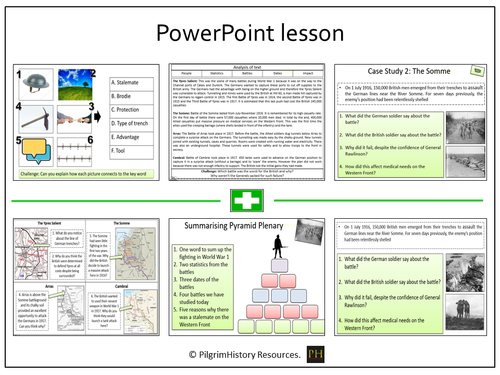


Edexcel 9-1 Medicine in Britain, Thematic study and historic environment
This lesson aims to give the context of the British sector of the Western Front and the theatre of war in Flanders and Northern France, the Ypres Salient, the Somme, Arras and Cambrai. They will also discover that not all the fighting was done in muddy trenches as most students generalise about.
Students will learn why there was a salient around Ypres and the advantages this gave the Germans on the higher ground, including Hill 60.
They will analyse the horrific death and injuries suffered on the first day of the battle of the Somme and why this battle was initiated in the first place.
Furthermore they will investigate the tunnelling system around Arras and the hospital built there, now called the Wellington Tunnels.
Finally they are given information about Cambrai and judge the impact of the tank in the overall outcome of the battle.
Activities include retrieval practice, the use of video evidence, a prioritising exercise as well as discussion and debate.
The resource is differentiated and gives suggested teaching strategies.
It comes in PowerPoint format which can be amended and changed to suit.
Something went wrong, please try again later.
some lovely activities but missing a slide on Cambrai
Report this resourceto let us know if it violates our terms and conditions.
Our customer service team will review your report and will be in touch.